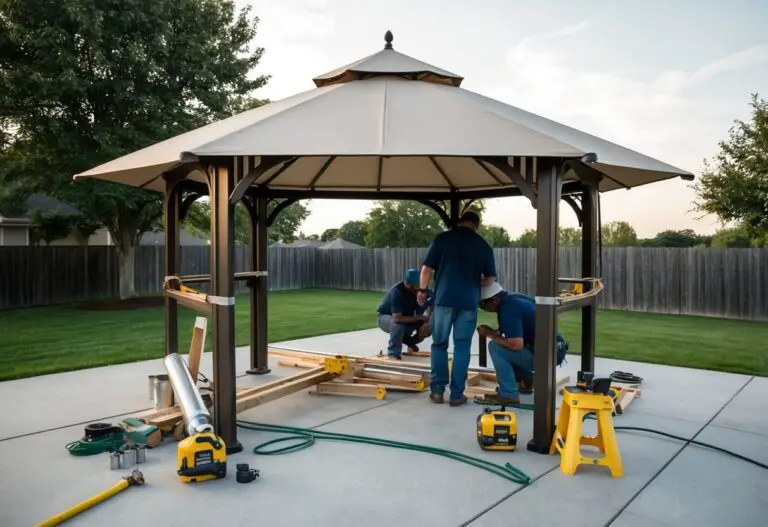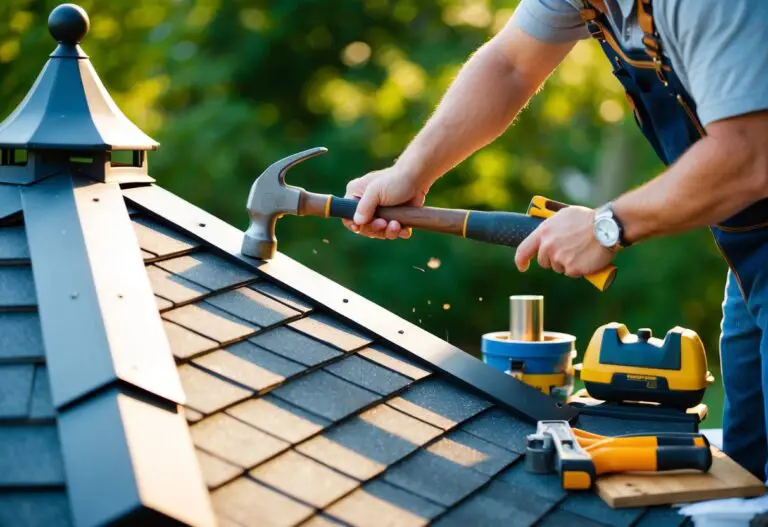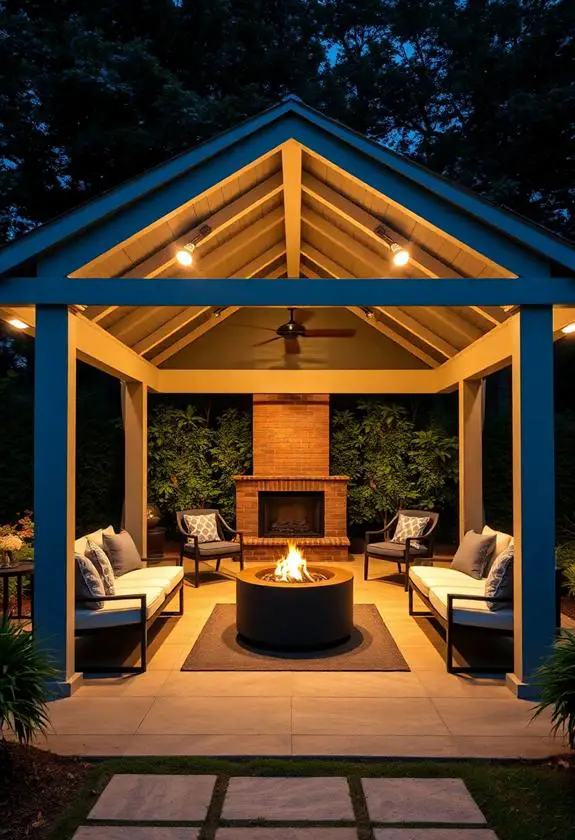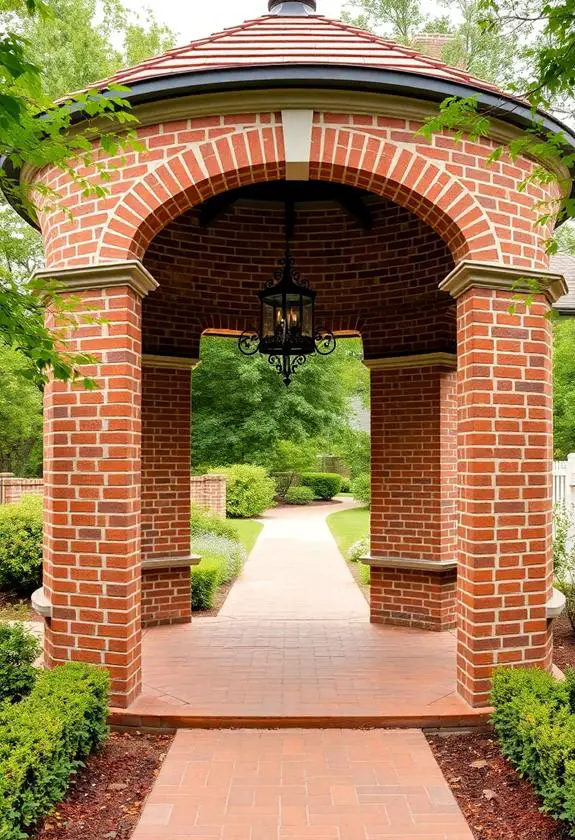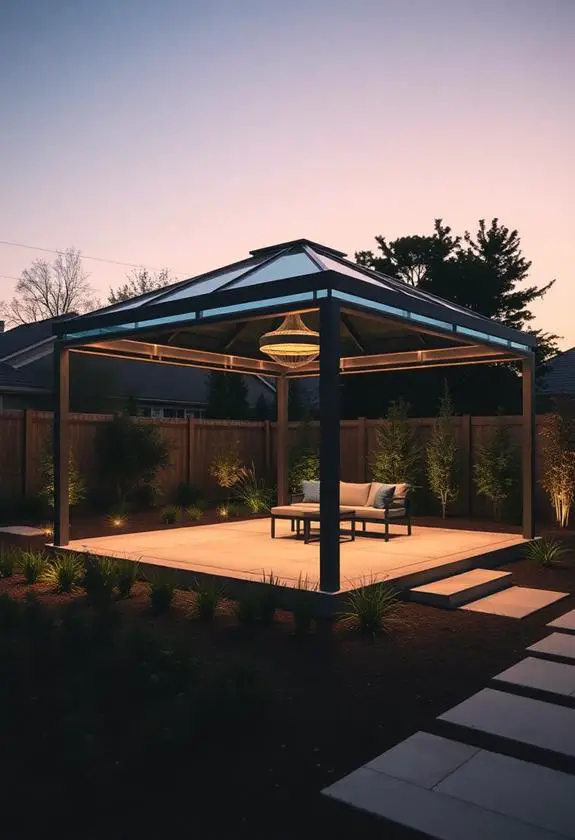Thinking about adding a gazebo to your backyard? You’re in for a treat! These charming structures can turn any outdoor space into a cozy retreat. But before you start building, there’s one key question you need to answer: how tall should your gazebo be?
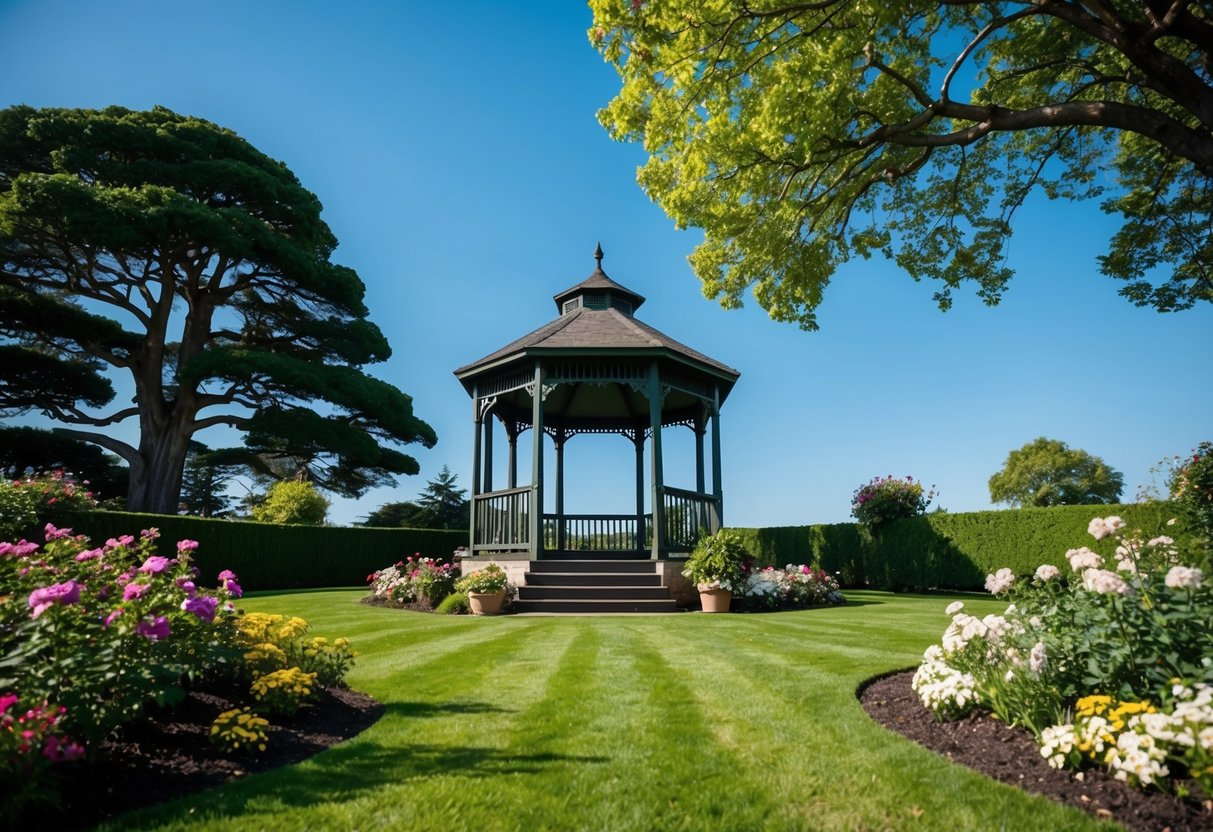
Most gazebos are between 8 to 12 feet tall, with 9 to 10 feet being the sweet spot for many homeowners. This height range gives you plenty of headroom while keeping the structure in proportion with your yard. But don’t just go with the average – your perfect gazebo height depends on a few important factors.
Your gazebo’s height can make or break its look and function. Too short, and it might feel cramped. Too tall, and it could overshadow your whole yard. By picking the right height, you’ll create a space that’s comfy, practical, and looks great in your outdoor setup.
Key Takeaways
- Gazebo heights typically range from 8 to 12 feet
- The ideal height depends on your specific needs and yard size
- Local rules and the gazebo’s purpose play a big role in height choice
Factors to Consider When Determining Gazebo Height
When choosing the right height for your gazebo, there are several key factors to keep in mind. Your gazebo’s purpose plays a big role in deciding its height.
For relaxation, a cozy 8-foot tall structure might be perfect. If you plan to host parties, you may want to go taller, around 10-12 feet, to create an airy feel.
Think about your yard size too. A larger space can handle a taller gazebo without it looking out of place. Check local rules before building – some areas have height limits.
Comfort is crucial. Make sure you can stand up straight and move around easily. If you or your guests are tall, consider a higher ceiling to avoid bumping heads.
Don’t forget about seating! Leave enough headroom above chairs and tables. A good rule of thumb is to add at least 3 feet above the tallest piece of furniture.
Your budget matters too. Taller gazebos often cost more due to extra materials. Balance your ideal height with what you can afford.
Remember accessibility. If you need wheelchair access, ensure the entrance is wide enough and any steps are manageable.
By thinking through these factors, you’ll find the perfect height for your new backyard oasis.
Typical Gazebo Heights
Gazebos come in a range of heights to suit different needs and spaces. Most residential gazebos fall between 8 to 12 feet tall. This range works well for many backyard settings.
If you have a small garden or patio, an 8-foot gazebo might be perfect. It provides enough headroom without overwhelming your space. For larger yards or gatherings, you might prefer a 10 or 12-foot tall structure.
Some factors to consider when choosing your gazebo height:
- Your own height and comfort
- Size of your outdoor area
- Intended use (relaxing, dining, events)
- Local weather conditions
In sunny areas, a taller gazebo (10-12 feet) can help keep things cooler. The extra height allows for better air flow.
For grill gazebos, make sure there’s enough clearance for smoke to rise safely. A height of 9-10 feet often works well for this purpose.
Pop-up gazebos typically range from 7-10 feet tall. These are great for temporary use or smaller spaces.
Remember, you can also find custom height options. Some gazebos can be as tall as 18 feet for special needs or larger gatherings.
Benefits of Different Heights
Gazebo height can make a big difference in how you enjoy your outdoor space. Let’s look at some options!
Lower heights of 7 to 8 feet can be great for smaller yards. These gazebos fit nicely in cozy spaces without overwhelming your landscape.
Medium heights of 9 to 10 feet offer a nice balance. You’ll have plenty of headroom, and the gazebo will still look proportional in most settings.
Taller gazebos of 11 to 12 feet can really make a statement. You’ll have tons of space for hanging lights or plants. These work well for outdoor bars too!
Here’s a quick breakdown of height benefits:
- 7-8 feet: Cozy, fits small spaces
- 9-10 feet: Versatile, comfortable for most
- 11-12 feet: Roomy, grand appearance
Remember to check your local rules before building. Some areas have limits on gazebo size and height.
Think about how you’ll use your gazebo. If you’re tall or love to entertain, a higher ceiling might be best. For a quiet reading nook, a lower height could feel just right.
Compliance with Local Regulations
Before you build your gazebo, it’s important to check your local building codes and zoning laws. These rules can affect how tall your gazebo can be.
Many areas have height restrictions for outdoor structures. You might need to keep your gazebo under a certain height, often between 12 and 15 feet. This helps maintain the look of the neighborhood and ensures safety.
You’ll probably need to get a permit before you start building. The permit process helps make sure your gazebo will be safe and follows all the rules. Don’t skip this step, as it could cause problems later.
When applying for a permit, you may need to provide:
- A sketch of your gazebo design
- Its planned location on your property
- The materials you’ll use
- The gazebo’s dimensions, including height
Remember, rules can vary a lot from one place to another. What’s okay in your friend’s town might not be allowed where you live. It’s best to talk to your local building department directly.
By following these regulations, you’ll create a gazebo that’s not only beautiful but also safe and legal. Plus, you’ll avoid any headaches or fines down the road.
Tips for Choosing the Right Height
Measure your space carefully before deciding on a gazebo height. You’ll want to make sure it fits comfortably in your yard without looking too imposing.
Think about how you’ll use the gazebo. For dining and entertaining, 8-10 feet is usually good. If you want more airflow in a hot climate, go taller – up to 12 feet.
Sun exposure matters too. A taller gazebo (10-12 feet) allows better air circulation to keep things cool. You can also add shades to control sunlight.
Consider who will use the space. Make sure there’s enough headroom for the tallest person to stand comfortably.
Look at examples in your neighborhood or home improvement stores. This can give you a good sense of different heights.
Don’t forget about proportions. A very tall gazebo might look odd next to a single-story home. Try to match the style of your house.
Ask a landscaper or contractor for advice. They can help you pick a height that works well for your specific yard and needs.
Remember: you can always add fans or heaters later to make the space more comfortable, no matter what height you choose.
Frequently Asked Questions
Gazebo height is an important factor to consider when building or buying one. Let’s look at some common questions about gazebo dimensions and the key things that impact the ideal height.
What factors determine the ideal height for a gazebo?
The ideal gazebo height depends on a few things. Your height and the height of people who will use it matter. The gazebo’s location and surroundings play a role too. Think about how you’ll use the gazebo – for dining, relaxing, or events.
Is there a standard or average height for gazebos?
Most gazebos are between 8 and 12 feet tall. This range works well for many uses. It gives enough headroom while keeping a cozy feel. An 8-foot gazebo suits most needs. Taller options up to 12 feet offer more space and airflow.
What considerations should be taken for gazebo roof height?
The roof height affects the gazebo’s look and function. A higher roof lets in more light and air. It can make the space feel bigger too. But very high roofs may not block wind or rain as well. Think about your climate when choosing the roof height.
Can a gazebo be too high, and if so, what are the limitations?
A gazebo can be too high. Very tall gazebos might look out of place in your yard. They can also be harder to heat or cool. Local rules may limit how tall you can build. Check with your city before planning a very tall gazebo.
How does the intended use of a gazebo affect its optimal height?
Your plans for the gazebo help decide its best height. For dining, make sure there’s room for people to stand up easily. If you want to add fans or lights, you’ll need more height. For parties, a taller gazebo gives a more open feel. Think about what you’ll do in your gazebo most often.
